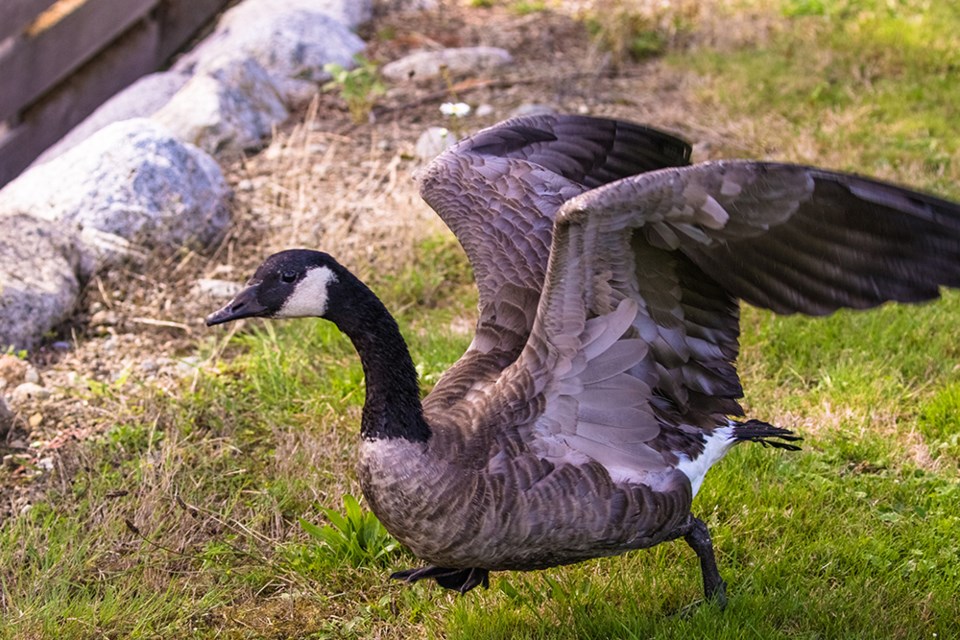A sorry looking goose was sitting in a compost pile near Brew Bay, emaciated and not eating. Neighbours knew he had lost his mate two years ago and was still on his own. The compost pile was a good choice; on the lawn or alone at the beach he would have been a “sitting goose” for a hungry eagle.
When Powell River Orphaned Wildlife Society (PROWLS) arrived, the goose was alarmed but too weak to escape.
When taken to the beach, it called out for help. A flock responded, but kept its distance.
Moulting, too weak to walk and unable to fly, he was quickly and easily picked up again and brought to PROWLS. There, he spent a couple of days being fed a special emaciation formula to get his digestion working properly, then he was placed in a flight cage with a wading pool. He got a big bowl of duck and goose pellets, garnished with tender grass, clover and dandelions.
He soon licked the bowl clean and ate more every day, becoming alert and stronger. Three weeks later, he was back in the estuary at Brew Bay.
He was identified as a Taverner’s goose, so PROWLS hopes he will take up with a passing flock and spend winter with his own kind.
During much of the year geese associate in large flocks, and many of these birds may be related to one another. Most Canada Geese do not breed until their fourth year. Once chosen, pairs mate for life.
Contributed photo



